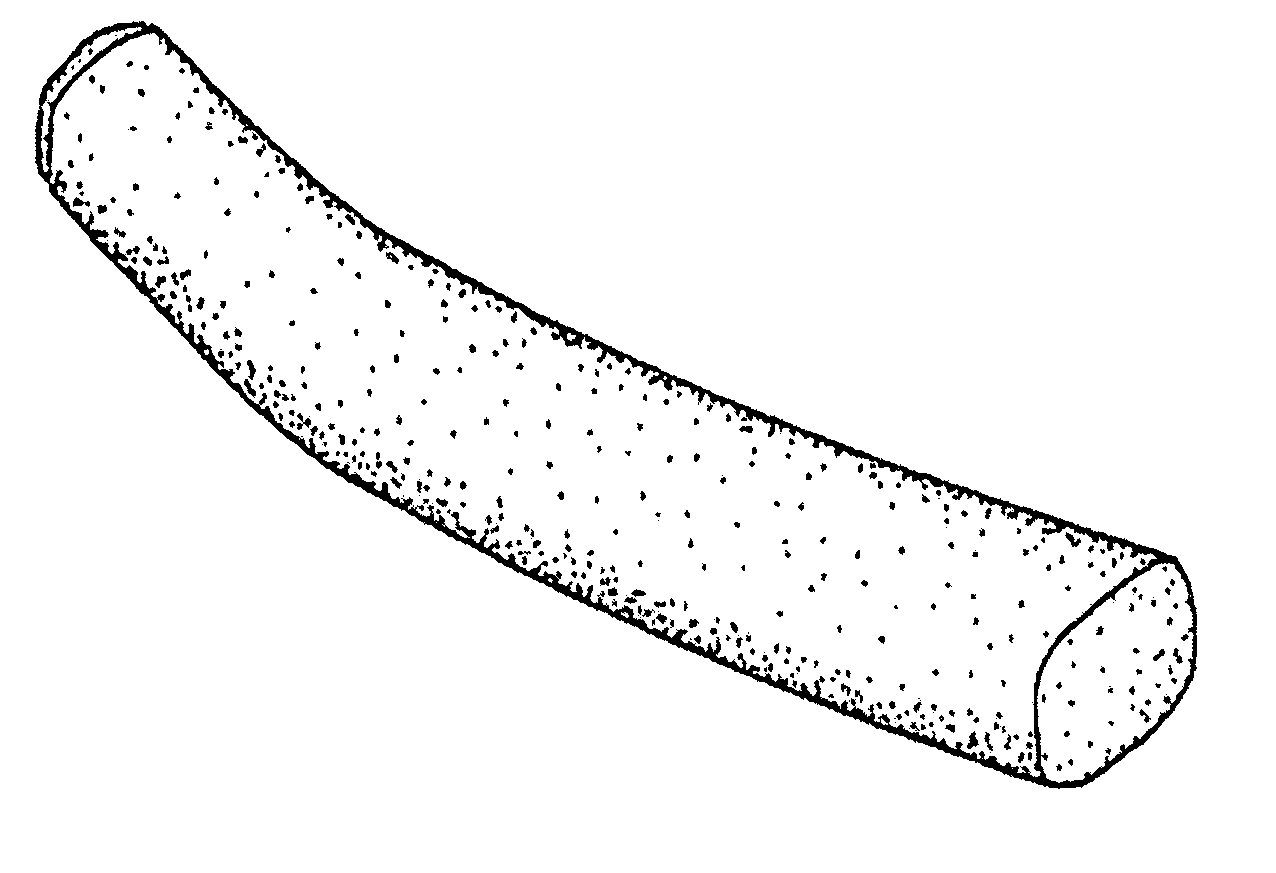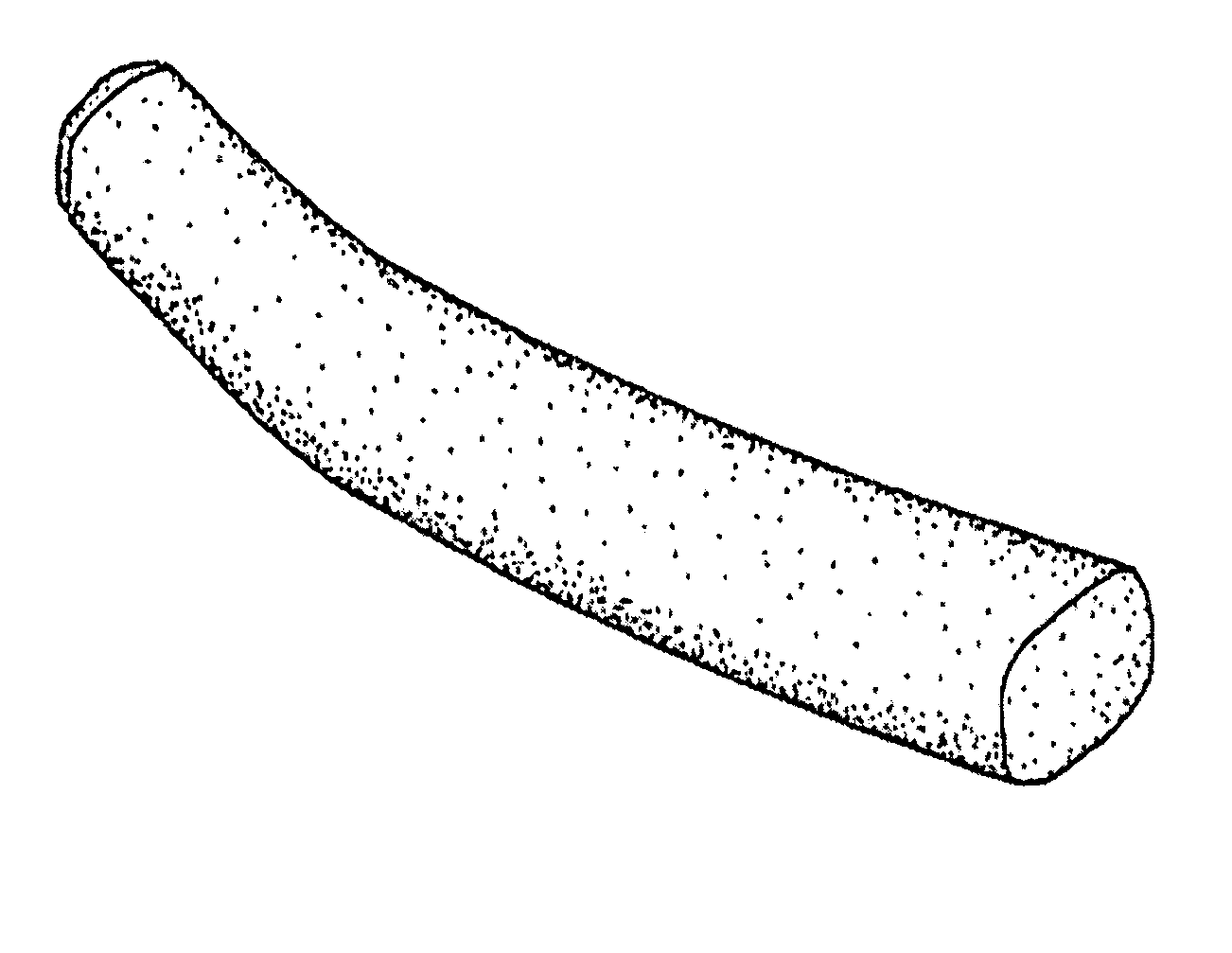Bleached expanded pigskin and products
a technology of expanded pigskin and expanded pigskin, which is applied in the field of processing pigskin, can solve the problems of low palatability of rawhide, dogs quickly lose interest, and lack of enzymes needed to digest rawhid
- Summary
- Abstract
- Description
- Claims
- Application Information
AI Technical Summary
Benefits of technology
Problems solved by technology
Method used
Image
Examples
example 1
[0042]Using the second, third and fourth layers of dehaired pigskin with a moisture content of 50–80% by weight, the skin is processed with an alkali mixture. A mixture of 10–30% sodium sulphide, 0.01–0.5% alkali enzymes and lime is made up. The quantity of lime is such that the pH is greater than or equal to 12. This mixture or mass is daubed on the pigskin. The pigskin is allowed to stand in stacks for 10–30 hours. The pigskin is then rinsed in water in a rotating drum. The alkali is removed in two steps. The first step agitates the pigskin with 1–2.5% ammonium chloride for 0.5–3 hours. The pigskin is then rinsed with water. The second step agitates the pigskin with 4–10% ammonium chloride and 0.1–0.5% pancreatic enzymes (zymine) for 4–6 hours to further remove the alkali and to soften the skin. Then, the pigskin is processed to take off the fat by agitating with 1–3% sodium carbonate and 0.3–1% degrease materials. The skin is rinsed with water and agitated with 15–30% hydrogen pe...
example 2
[0043]The second, third and fourth layers of dehaired pigskin with a moisture content of 60% is used. An alkali mixture is made up of 1 Kg (kilogram) of sodium sulphide, 300 g (grams) alkali enzymes, 1.5 Kg water and 3 Kg lime. This mixture is then applied to 1000 Kg of pigskin. The pigskin remains in contact with the mixture for 20 hours, after which the pigskin is washed in water for 1–3 hours. Then, the pigskin is soaked in 20 Kg liquid ammonium chloride for 1 hour. The pigskin is washed in water for 0.5–3 hours. Then, the pigskin is agitated in 80 Kg liquid ammonium chloride and 1 Kg pancreatic enzymes (zymine) for 5 hours. After rising with water for 0.5–3 hours, the pigskin is then agitated in a liquid of 25 Kg of sodium carbonate and 5 Kg degrease material to remove the fat. The pigskin is then washed in water. Then, the pigskin is agitated with 240 Kg of 27.5% hydrogen peroxide in a drum. The drum is turned for 2 hours and then stopped for 2 hours. The turning-stopping proce...
PUM
 Login to View More
Login to View More Abstract
Description
Claims
Application Information
 Login to View More
Login to View More - R&D
- Intellectual Property
- Life Sciences
- Materials
- Tech Scout
- Unparalleled Data Quality
- Higher Quality Content
- 60% Fewer Hallucinations
Browse by: Latest US Patents, China's latest patents, Technical Efficacy Thesaurus, Application Domain, Technology Topic, Popular Technical Reports.
© 2025 PatSnap. All rights reserved.Legal|Privacy policy|Modern Slavery Act Transparency Statement|Sitemap|About US| Contact US: help@patsnap.com


